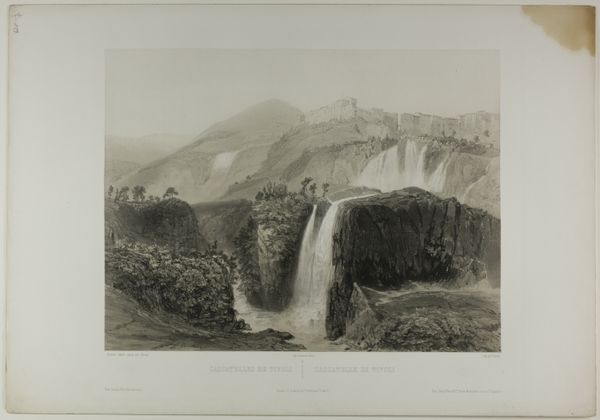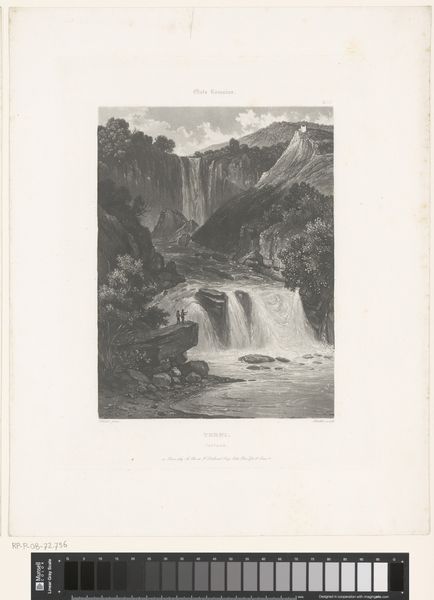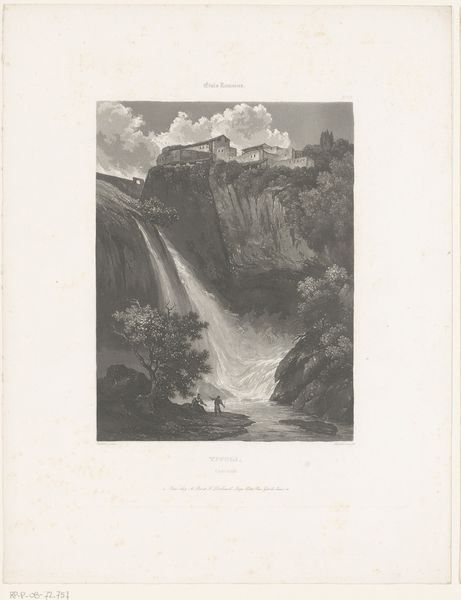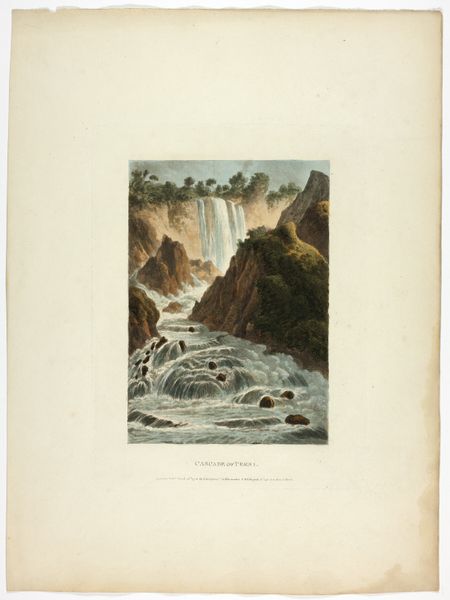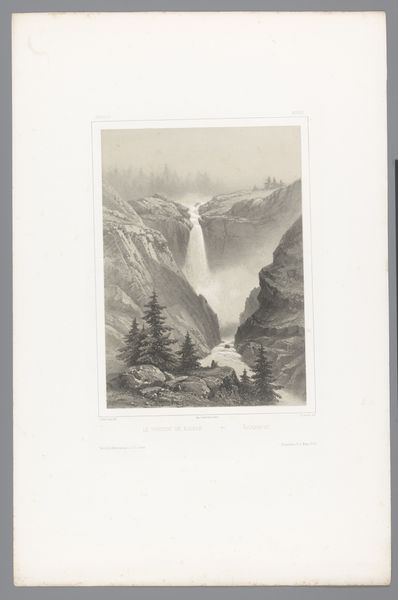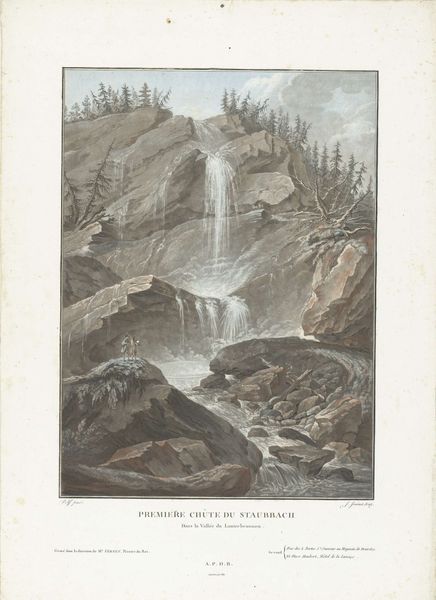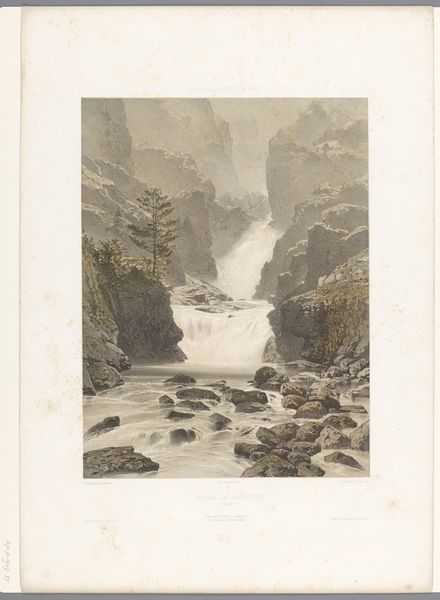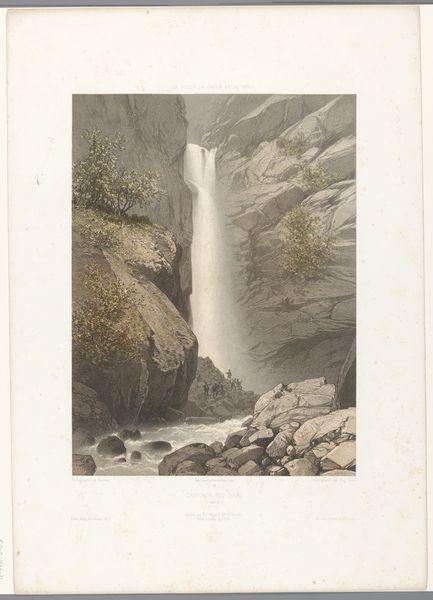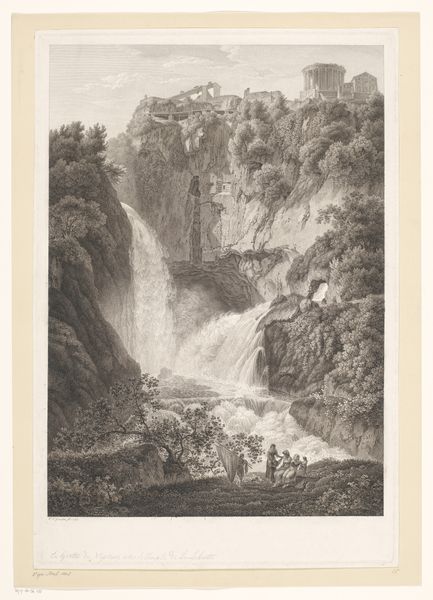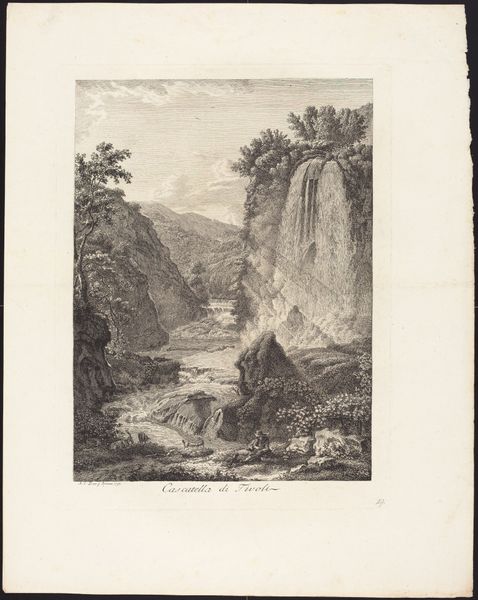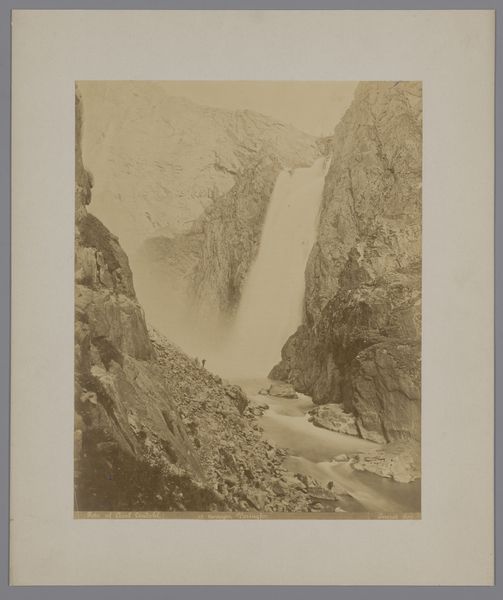
Terni: Marble Falls, plate twenty from Italie Monumentale et Pittoresque c. 1848
0:00
0:00
drawing, lithograph, print, paper
#
drawing
#
lithograph
# print
#
landscape
#
paper
#
underpainting
#
romanticism
#
france
Dimensions: 378 × 276 mm (image/tint stone); 565 × 399 mm (sheet)
Copyright: Public Domain
Nicolas Chapuy made this lithograph of the Terni Marble Falls in Italy as part of his series ‘Italie Monumentale et Pittoresque.’ Chapuy was trying to capture the sublime beauty of the Italian landscape, but also the importance of its monuments. This image, like others in the series, served as both a picturesque view for tourists and a historical record for scholars. The lithograph technique itself is part of this history. Lithography allowed for the relatively quick and inexpensive reproduction of images, making art and information more accessible to a wider audience. It aided the development of mass culture and tourism in the 19th century. Understanding Chapuy’s lithograph requires us to consider the social and technological context in which it was made and distributed. Art historians consult travel guides, historical surveys, and printmaking archives to better understand the cultural work being done here. Appreciating art means recognizing its historical contingency.
Comments
No comments
Be the first to comment and join the conversation on the ultimate creative platform.
